Russia and and the European Union may be at each other’s throats over a whole host of issues ranging from the ongoing crisis in the Ukraine to NATO enlargement and human rights for LGBT+ people, but when it comes to space, things are much more businesslike. The European Space Agency, heir to a fine tradition of European bickering and bureaucracy and Roscosmos, partial heir to the Soviet space legacy have announced they are to work together on a lunar prospecting mission that will lay the groundwork for a moonbase at the south pole of our pale white celestial neighbour.
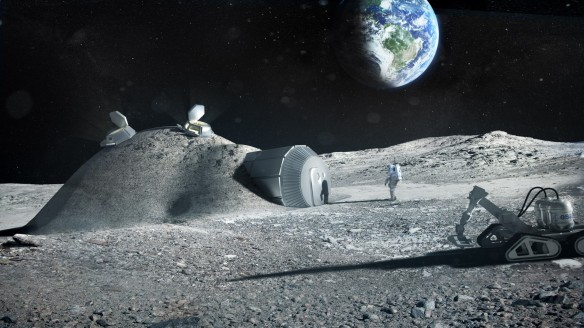
Artist’s impression of a moonbase that could eventually result from the EU-Russia mission.
http://www.bbc.com/news/science-environment-34504067
Moonbases are a big deal when it comes to the space exploration wishlist. In the late 1950’s whilst Sputniks circled the Earth and American rockets exploded catastrophically on the launchpad, US Air Force General Ben Bova believed they would be the ultimate Cold War weapon, a place from which to rain down nuclear death upon the opposing bloc, the ultimate high ground that needed to be seized by military means.
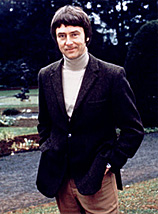
Gerard O’Neill, rocking his signature turtleneck and blazer combo
In the mid 1970’s, Space colonization “guru” Gerard K. O’Neill thought the Moon was unsuitable for large scale habitation but accorded it a crucial role, it would be the quarry that would furnish materials for his huge space colonies, using his patented “Mass Driver” concept, buckets of lunar soil would be hurled into space where they would be broken down and turned into useful metals or silicon, or used in landscaping the verdant valleys of the space habitats.
O’Neill’s spartan Moon Base, the utilitarian structure that would help build an extravagant life in orbit.
Popular Culture depictions such as Arthur C. Clarke’s 2001: A Space Odessy often depicted future Moon colonies perpetuating the uneasy politics of the Earth. In the 1980s, the science fiction author Ben Bova envisaged a moon dotted with settlements ranging from an American outpost to the Soviet “Kosmograd”, Bova’s “Lunatics” at least got on well enough to host a Lunar Olympics, pole-vaulting in low gravity was apparently quite something to behold.

WELCOME…. TO MOONBASE
The Soviet Union got in on the Lunar exploration act early, succeeding in crashing a probe into the moon in 1959. Luna 2 scattered Soviet pennants across the surface making it the first example of extraterrestrial communist littering. There’s a misconception in the popular imagination that there was a single monolithic “Space Race” where the US and USSR both agreed at some point to set the moon as a clearly defined end point and the last one there was a rotten egg (or inferior political-economic system). In fact, Kennedy chose a manned landing on the moon as America’s spaceflight goal as his advisors assured him it was one that the US had a relatively good chance of completing before the USSR. It was only when the Soviets realised that the Americans were serious and that it might undo all their propaganda work in low earth orbit that the USSR began to train its sights higher with regards to its manned program.
The Soviet Lunar program is a mind-boggling mess of competing designers, proposals, counter-proposals, false-starts and disasters. Though by the end of the 1960s plans were coalescing, two spacecraft systems: The Zond and the N1 took center stage.
Zond: Tortoises in space
By 1968, anticipation had reached fever pitch, the USA was recovering from the Apollo 1 fire that had tragically killed three Astronauts when the oxygen rich atmosphere of the test chamber they were training in ignited. The nascent Apollo program was moving ahead in leaps and bounds, thanks largely to its “All-up testing” model, that tested multiple components live in the same spaceflight rather than in a series of painstaking individual tests. The USSR meanwhile had kept an awfully low profile since cosmonaut Vladimir Komarov had been killed in 1967. Big things were expected however. In 1968 the Soviet Union’s Zond ship circumnavigated the moon carrying a biological cargo of tortoises, worms, plant seeds and bacteria. This pound-shop noah’s ark was a major milestone, the first spacecraft to be recovered on earth from a circumlunar (that is to travel round the moon and then back to earth) mission. These humble creatures were also the first living things to pass that close to the moon. Over that Summer NASA had, for a range of reasons, but in no small part thanks to worries about the Soviets’ potential progress upgraded its Apollo 8 mission from an Earth Orbit test to a manned circumlunar mission. America waited, the Russians missed a crucial launch window. And in December 1968 Astronauts Borman, Anders and Lovell blasted off on an incredible voyage of discovery. They would provide America with the ultimate Cold War Christmas present: Astronauts reading from the book of Genesis as they circled the Moon on Christmas Eve. They also brought the world one of the most influential photographs of the 20th century: “Earthrise”
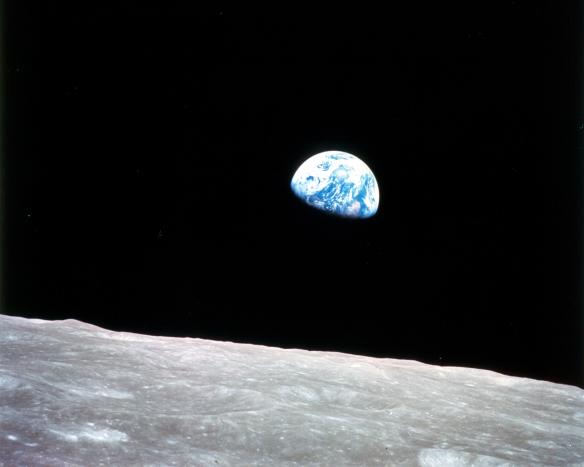
Apollo 8 signaled that US victory in the race to the moon was pretty much a fait accompli, particularly when no new manned Zond missions took place as Apollo 9 and 10 readied the way for the US Lunar Landing of July 1969.
Starting its lunar effort behind the USA, multiple designers and bureau’s bickered over the best way to get there and back safely. One scheme involved a single cosmonaut landing in one location, planting a flag and then moonbuggy-ing across the desolate lunar terrain in a tense journey to get to his ride home, another rocket that would get him back to earth. I was reminded of this venture when I saw Matt Damon smirk his way across the Red Planet in “The Martian”. It’s possible that Mark Watney’s trek from his camp to his rocket back to martian orbit could have been enacted by Alexei Leonov (the cosmonaut primed to be the first Soviet citizen on the moon) in the late 1960s or early 1970s. Rather than the scientifically minded jaunts that Apollo astronauts would have taken, this Moon buggy ride would have been a matter of life and death, there would have been no going back for the cosmonaut, if he didn’t get to the return rocket, he would have had to endure a melancholy death on the moon, knowing that in doing so he had dealt a humiliating blow to Soviet pride.
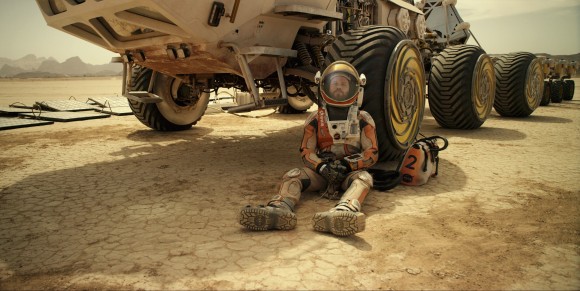
Matt Damon takes a break from “Sciencing the shit” out of things to take a breather.
These, and other complicated schemes stemmed from the fact that the Soviets had not yet developed a rocket powerful enough to make the trip with all the necessary equipment, they had to think around the problem, hence the idea of this mad dash. Eventually the Soviets would settle on a mission profile that involved a hair-raising space walk as the cosmonaut (laden down with moon rocks) re-docked with his craft in orbit around the moon.
These proposals were batted back and forth between design bureaus and the Soviet government, ultimately the moon program would be repeatedly pushed back before its final cancellation, not least because the gargantuan rocket it had fixed its Manned Lunar hopes on was, quite literally, explosively temperamental.
The N-1 “Webb’s Giant”
From 1965 onwards, NASA’s ornery administrator Jim Webb had belligerently warned any media outlet or congressmen that would listen that the Soviets had something BIG up their sleeve, a rocket that could compete with the USA’s Saturn 5, a 60 ft tall colossus that was any Freudian’s dream when it came to analysing the “Missile Envy” of the Cold War phallocracy. Webb’s warnings weren’t exaggeration to help stop the steady decline in NASA’s congressional funding, they stemmed from real intelligence on what the Soviets were working on. Though the N-1 would never fly. It was launched four times between February 1969 and November 1972, and each time it failed.
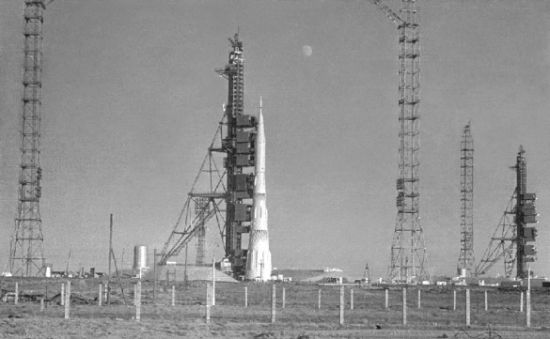
The Beast from the East, patiently waiting on the launchpad for its next explosive failure
One of the N-1’s failures took out the entire launchpad and was the largest non-nuclear explosion in history, for decades rumours of a huge explosion that ended the Soviet Moon program circulated, it would only be with Glasnost in the 1980s that the truth behind those allegations came out. With the US monopolising the propaganda advantage of landing on the Moon, Communist Party General Secretary Brezhnev announced that the Soviet Union had never intended to land a man on the Moon and its real priority was space stations. Whilst less than convincing to many American experts who knew full well the Soviet government was now lying through its teeth, Brezhenv’s statement caused an outcry amongst Americans who were already skeptical of the Apollo programme’s purported benefits. If the other guy wasn’t even competing, then what was the point!?
Lunokhod:
Whilst Soviet cosmonauts would never unfurl the Red Flag on the Moon, Soviet lunar rovers would traverse the surface for an astonishing amount of time. The Soviets’ early 1970s “Lunokhod” program saw two lunar rovers conduct long duration missions, trailing round the Lunar surface for months at a time, sending back images and data to Soviet mission control. In a way, this remote exploration ended up setting the tone for lunar and planetary missions more than the manned Apollo programme. Every few years there is an upsurge in discussion about the need to land on mars (almost always with a 20 to 25 year deadline), but since the 1970s its robots rather than people that have done the exploring.
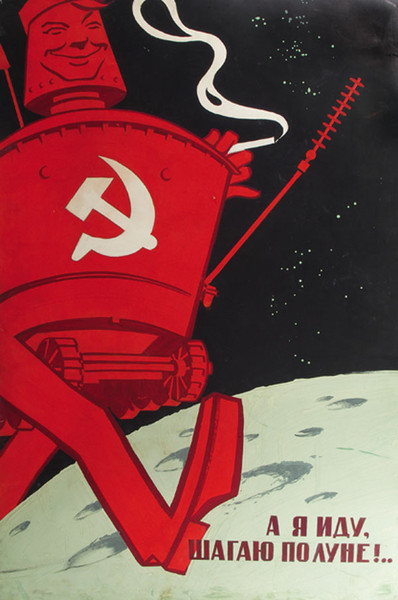
“And I’m strolling on the Moon!…”
In this propoganda poster, Lunokhod is imagined as a smug chain-smoker sporting a pair of platform shoes and a jaunty cap. He’s also a deep shade of communist crimson, unlike the white-grey Lunokhods of reality. It’s an image I often think about whenever I read the insufferably twee twitter accounts of @philae2014 the EU’s comet lander, or @MarsCuriosity, NASA’s WAL-E -esque Mars robot. Whilst they anthropomorphicise those scientific instruments as curious, childlike characters, the Soviets decided some sort of cigarette-wielding lad-about-town, a real Muzhnik, was the best way forward. You’d feel safer leaving your kids with Philae or Curiosity, but you know it’d be Lunokhod you’d invite on a night out. It’s a strange choice to modern, western eyes, but proof that even in robotic space travel, there’s a craving for humanising detail. We want to connect with these charismatic robots. American visitors to Moscow remarked that Lunokhod models were an extremely popular contemporary hit at the “Children’s World” toy shop.
The Relics of the Soviet lunar program can be viewed at the Cosmonauts exhibit in London, where the LK lunar landing stares balefully down at exhibition-goers, or the cumbersome Soviet Lunar spacesuit that stands vigil in DC’s National Air and Space Museum (Sold at auction by the cash-strapped Russian Space Agency during the early 1990s), but it’s also lived on in other ways. The engines and technology produced by the N1 program would be cannibalised and used in not only Soviet and Russian rockets, but also those of private spaceflight companies. Elon Musk’s Space-X corporation was a keen student of Soviet spaceflight during its infancy and a presentation at the most recent British Interplanetary Society’s Chines and Soviet Technical Forum pointed out similarities between Space-X technological thinking and Soviet engineering.

“There will too be women astronauts! It’s true, and we’ll all live in cities on the Moon!”
Like Marge Simpson, Bova may have been off in terms of predicting imminent US and Soviet Moon colonies, but the EU-Russia mission proposal proves that this is a dream that refuses to die. Cosmonauts and communist colonists never set foot on the Moon, but Soviet lunar rovers did, and they remain there to this day as a testament to the partial fulfillment of a Soviet dream amidst so many other failures.
Further on down the line:
Asif Siddiqi’s “Challenge to Apollo” remains the standard work in detailing the institutional in-fighting and chaos that beset the Soviet lunar program, it concludes with the final cancellation of the N1 program in the mid 1970s. Robert Poole’s “Earthrise” and James E. David’s “Spies and Shuttles” detail the frantic atmosphere at NASA prompted by the Zond mission. Poole is a fantastic storyteller and he does a great job of showing how NASA’s amazing photograph ended up focusing attention back on earth, rather than out into space.
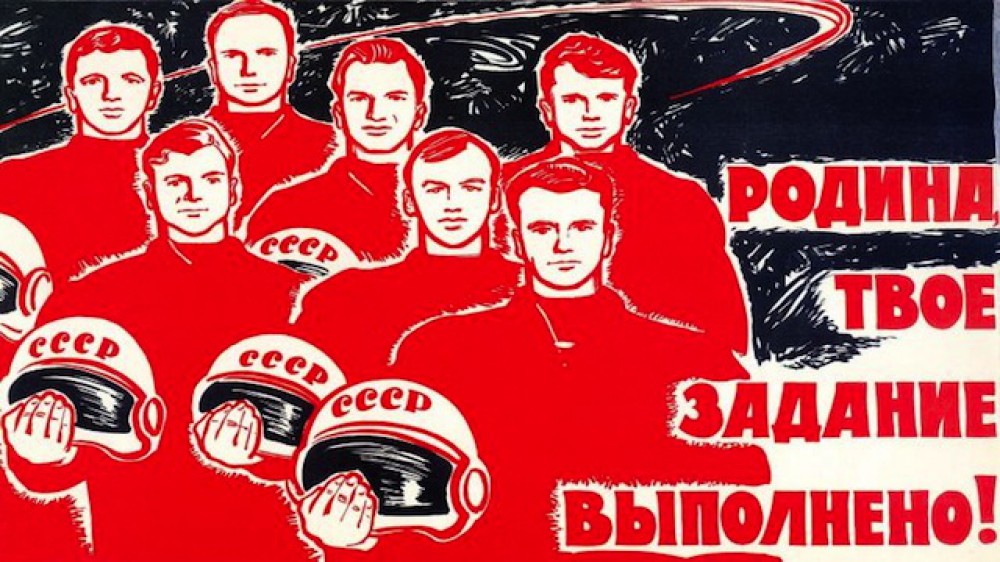
Is Lunokhod’s smug face a stock Soviet propaganda image? I’m sure I’ve seen it elsewhere.
LikeLike